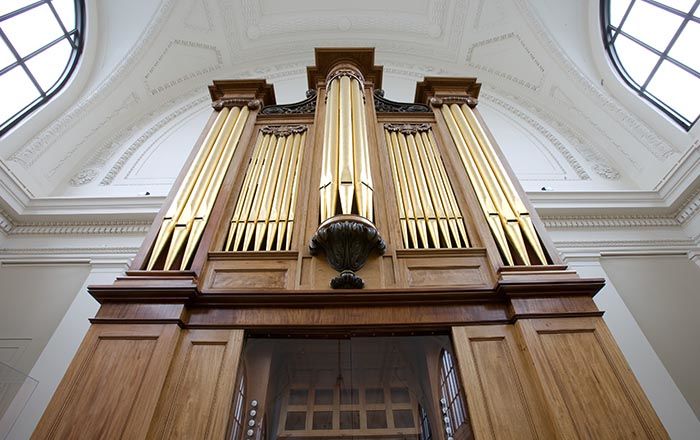Nail Violin
Not on view
The German violinist Johann Wilde invented the nail violin around 1740. The instrument consists of a wooden soundbox (circular or semicircular) and metal nails. Sound is produced by drawing a violin bow across the nails, creating bell-like tones. While it has limited capabilities, the instrument was popular in the eighteenth century and other makers built similar instruments in various forms.
Technical description: Flat circular wooden soundbox, the top surface of which is a thin spruce soundboard pierced by three carved rosettes; around the edge of the soundboard are driven two overlapping rows of steel pins, one row of 44 pins (the larger ones staggered chromatically) giving a chromatic compass of three octaves starting on a C, and a 4th diatonic octave above, the other row of 23 pins make a diatonic scale starting on an F; accidental pins are bent slightly outward near their tops, naturals are straight; four short wire-topped bridges on the soundboard form two opposing Vs, with two smaller bridges off the soundboard below the open point of the Vs; pairs of sympathetic wire strings crossed these bridges from a double row of 32 tuning pins on one side of the circle to 13 hooked hitchpins on the opposite side, the strings passing between the vertical pins; in the solid bottom of the circle, a central hole extending into a knob-like protrusion within the soundbox. Played with a bow (missing). (Linda Moot, 1978)
This image cannot be enlarged, viewed at full screen, or downloaded.
This artwork is meant to be viewed from right to left. Scroll left to view more.



